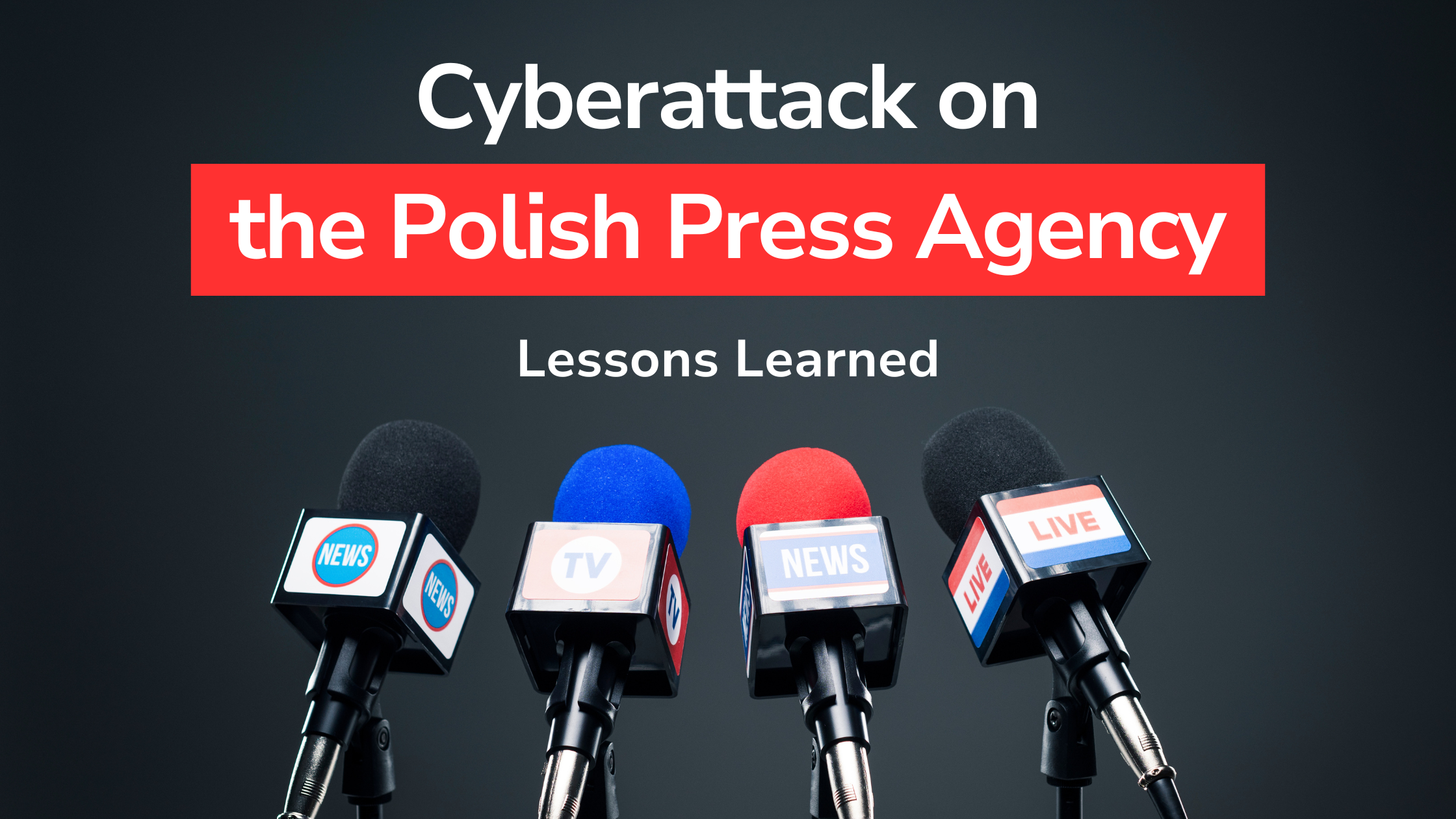The District Prosecutor’s Office in Warsaw conducted an investigation into the cyberattack on the Polish Press Agency (PAP) that took place on May 31, 2023. False information appeared twice on the PAP website. Cybercriminals gained access to an employee’s account and posted a fabricated dispatch. Although it is not yet known how the criminals infiltrated PAP’s systems, similar incidents can be prevented in the future.
The Global Risks 2024 report prepared by the World Economic Forum showed that disinformation was one of the greatest global threats. Research by the “Together Against Disinformation” Coalition indicated that 81% of Poles believed that the scale of online disinformation had increased over the past decade. These findings were published in the report “Disinformation Through the Eyes of Poles.”
False information is spread in various ways, including through social media and credible news channels. The PAP incident exemplifies how cybercriminals can sometimes publish false data through direct actions.
It is likely that the PAP employee’s account was compromised through malicious software. It remains unclear whether the attacker stole credentials or session data – explained Bartosz Cieszewski, Solution Architect at Secfense, a cybersecurity company. In the first scenario, hackers use stolen credentials to log into various services and perform actions such as posting false dispatches. In the second scenario, the attacker hijacks an existing session, gaining access without needing to log in.
Can We Prevent Such Attacks?
Strong authentication mechanisms are effective against stolen credentials, while session hijacking can be prevented through microauthorizations.
Username and Password are Not Enough
Data from Cisco Talos Incident Response showed that in 2023, a quarter of security incidents involved compromised user accounts. Cybercriminals obtain credentials through phishing, which involves impersonating trusted institutions to steal confidential information.
- Two- or multi-factor authentication mechanisms protect against the use of stolen credentials. Losing a username and password is not sufficient to gain access to a service or application. Passkeys technology further protects against phishing, eliminating the need for easily compromised passwords – explained Bartosz Cieszewski from Secfense.
Dangerous Cookies
Multi-factor authentication does not protect against session hijacking. This attack involves taking control of an active user session. The attacker gains access to resources and data that the legitimate user is authorized to access without needing login credentials.
- Session information is stored in cookies, HTTP headers, or session variables. Attackers target the unique session identifier to take control. Micro-authorizations protect against such attacks – said Bartosz Cieszewski.
Micro-Authorizations – Protection Against Session Hijacking
Micro-authorizations require re-authentication each time a user attempts to access specific resources or perform certain actions. They can be implemented anywhere in an application, with the owner or administrator deciding which actions need extra protection. FIDO2 authentication mechanisms, such as biometric identity confirmation, are easy to use and effectively prevent unauthorized access.
- In the PAP case, micro-authorization for the “add dispatch” action would have thwarted the attacker’s plans. Even with a hijacked session, the hacker would have been prompted for 2FA when trying to publish – added the expert from Secfense.
Disinformation is becoming an increasing problem. Media organizations should pay close attention not only to the accuracy of published information but also to adequately protect their systems against cybercriminals.
